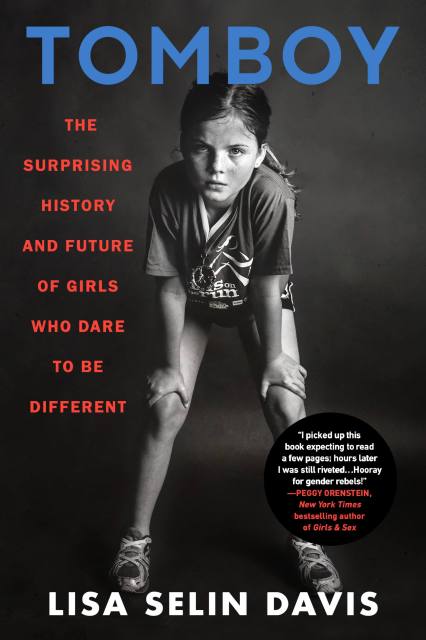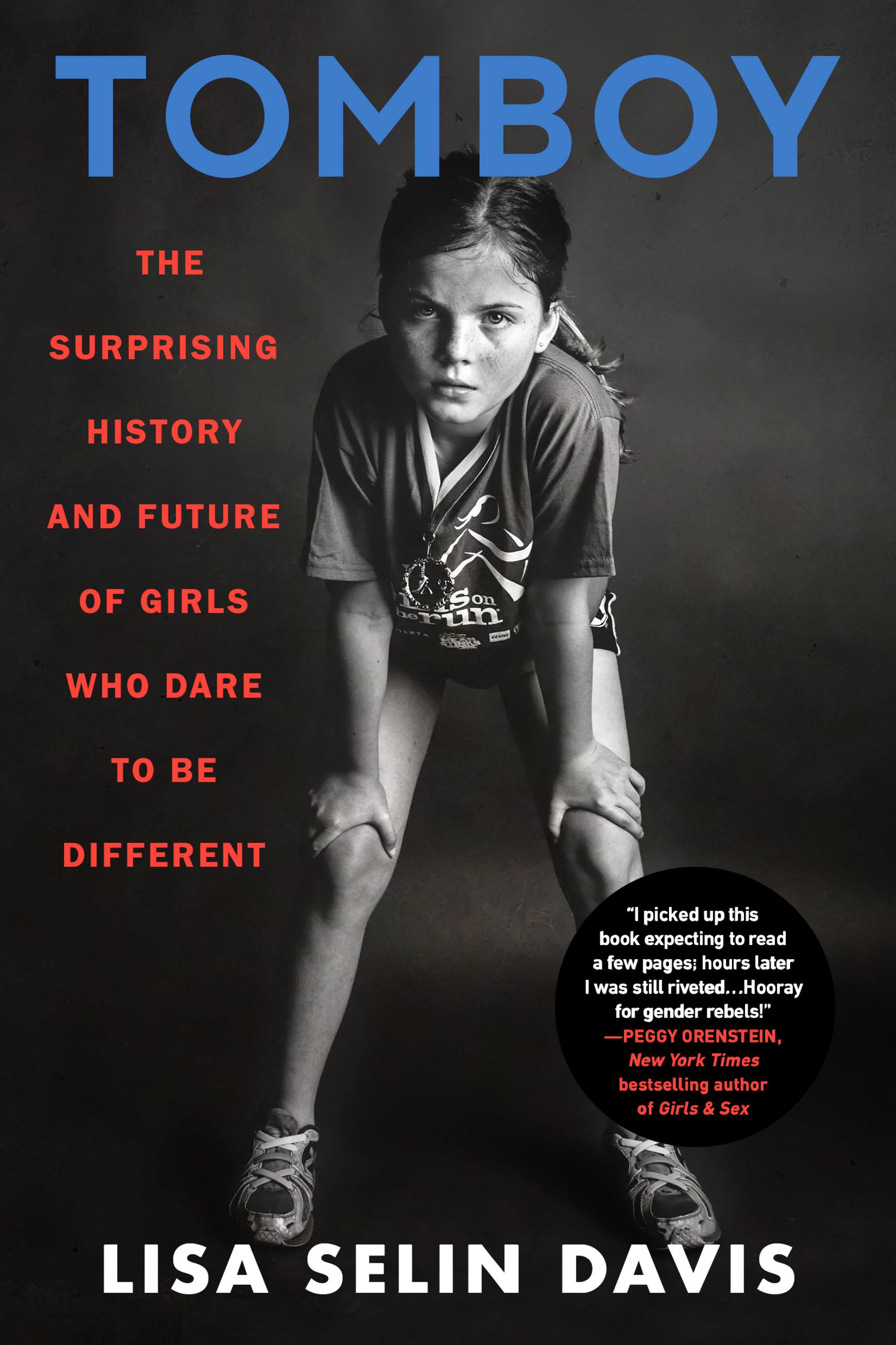Promotion
Shop now and save 20% on your back-to-school purchases & get free shipping on orders $45+ Use code: SCHOOL24
Tomboy
The Surprising History and Future of Girls Who Dare to Be Different
Contributors
Formats and Prices
Price
$17.99Price
$22.99 CADFormat
Format:
- Trade Paperback $17.99 $22.99 CAD
- ebook $11.99 $15.99 CAD
- Audiobook Download (Unabridged)
This item is a preorder. Your payment method will be charged immediately, and the product is expected to ship on or around December 14, 2021. This date is subject to change due to shipping delays beyond our control.
Also available from:
Based on the author’s viral New York Times op-ed, this heartfelt book is a celebration and exploration of the tomboy phenomenon and the future of girlhood.
We are in the middle of a cultural revolution, where the spectrum of gender and sexual identities is seemingly unlimited. So when author and journalist Lisa Selin Davis's six-year-old daughter first called herself a "tomboy," Davis was hesitant. Her child favored sweatpants and T-shirts over anything pink or princess-themed, just like the sporty, skinned-kneed girls Davis had played with as a kid. But "tomboy" seemed like an outdated word—why use a word with "boy" in it for such girls at all?So was it outdated? In an era where some are throwing elaborate gender reveal parties and others are embracing they/them pronouns, Davis set out to answer that question, and to find out where tomboys fit into our changing understandings of gender.
In Tomboy, Davis explores the evolution of tomboyism from a Victorian ideal to a twentyfirst century fashion statement, honoring the girls and women—and those who identify otherwise—who stomp all over archaic gender norms. She highlights the forces that have shifted what we think of as masculine and feminine, delving into everything from clothing to psychology, history to neuroscience, and the connection between tomboyism, gender identity, and sexuality. Above all else, Davis's comprehensive deep-dive inspires us to better appreciate those who defy traditional gender boundaries, and the incredible people they become.
Whether you're a grown-up tomboy or raising a gender-rebel of your own, Tomboy is the perfect companion for navigating our cultural shift. It is a celebration of both diversity and those who dare to be different, ultimately revealing how gender nonconformity is a gift.
-
*PUBLISHERS WEEKLY, STARRED REVIEW*
MS. MAGAZINE, "Reads for the Rest of Us"
Chronogram, "Books For Your October Reading List"
Featured on Cool Mom Picks "Spawned" Podcast -
"Hooray for gender rebels!"Peggy Orenstein, New York Times bestselling author of Girls & Sex
-
"[A] thorough and engrossing investigation... Davis's persuasive and deeply personal argument for moving beyond the gender binary will resonate with those curious about child rearing free of normative expectations."Publishers Weekly, starred review
-
"Tomboy is a revelation, an impassioned and empathic consideration of how gender is manufactured and sold, and how it can both oppress and empower. This is way more than a book for parents navigating how to raise individuals in a world of stubborn binaries; it's for all of us who want to understand that world, and how we might become our true selves within it."LaurenSandler, author of This Is All I Got: A New Mother's Search for Home andOne and Only: The Freedom of Having an Only Child, and the Joy of Being One
-
"As I read this book, I felt at turns challenged and surprised and at turns comforted-as a tomboy in the 80s, I saw myself on the pages and understood where I had come from and the forces that shaped me. As someone who currently teaches gender inclusion at schools across the country, I can't wait to use this book in the presentations I give. It will really help teachers and parents understand not just tomboys but gender. But it isn't just an informative and useful book; it's exciting and compelling as well."Alex Myers, author of Revolutionaryand Continental Divide
-
"Lisa Selin Davis uses TOMBOY as a launch pad for a thought-provoking and enlightening exploration of the troubled pink and blue waters of gender categories-and the words that can be life rafts to help us float above them or stones pulling us in deeper."Deborah Tannen, professor oflinguistics at Georgetown University and author of You Just Don't Understand,You're Wearing THAT?, and You're the Only One I Can Tell
-
"This book will surprise, delight, and challenge everything you think you know about gender. Davis's writing is lively and lucid; a sage and compassionate guide on this rocky terrain. Every parent needs to read this book."Jennifer Block, author of EverythingBelow the Waist
-
"A thoughtful, thorough examination and celebration of gender non-conformity, and a crucial contribution to our cultural understanding of this moment, and how we got here."LizPlank, author of FOR THE LOVE OF MEN
-
"Tomboy tackles a unique, contradictory moment in history: male and female binaries are exploding yet childhood has become more hyper-gendered than ever. How did we get here? What does it mean? I picked up this book expecting to read a few pages; hours later I was still riveted, underlining paragraphs, scribbling margin notes and rethinking all my assumptions about boys, girls and everyone along or beyond that spectrum. Hooray for gender rebels!"Peggy Orenstein, NewYork Times bestselling author of Girls & Sex
-
"An informative jumping-off point for further investigation."Kirkus
-
"[A] fascinating book that has resulted [explores] the concept of the tomboy from Victorian times to today's world, where considerations of gender are front and center."Booklist
-
"Davis traces the origin of the word tomboy, as well as movements of the pink/blue line in history and the impact of commercialism, homo- and transphobias, the media, racism and privilege. Who gets to draw the line? The single unequivocal truth about gender Davis uncovered is "it's complicated," but the more we know, the sooner we can undo stereotypes. Tracing the history and impact of the word "tomboy" [Davis] provides the backdrop for a study of changing gender identity lines and how better to navigate complex gender issues."Shelf Awareness
-
"An intriguing look at culture's influence on gender & identity."PEOPLE Magazine
-
"Lisa Selin Davis leverages a familiar term to take a comprehensive look at gender performance in girls...Davis takes the reader in a fresh direction by illuminating the forces behind the shifting regard in which tomboys have been held. ...thoughtful consideration of how money and power have shaped our ever-changing view of tomboys."New York Times Book Review
- On Sale
- Dec 14, 2021
- Page Count
- 336 pages
- Publisher
- Legacy Lit
- ISBN-13
- 9780316458337
Newsletter Signup
By clicking ‘Sign Up,’ I acknowledge that I have read and agree to Hachette Book Group’s Privacy Policy and Terms of Use







